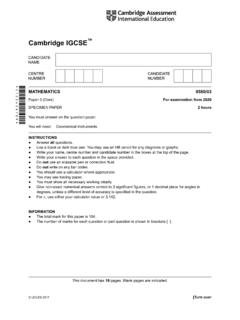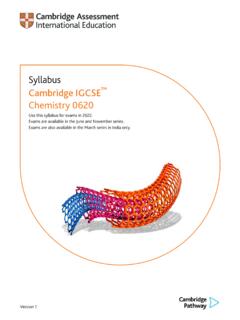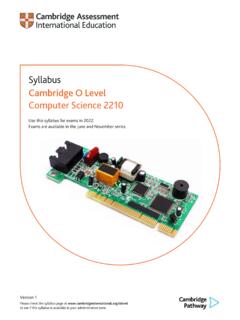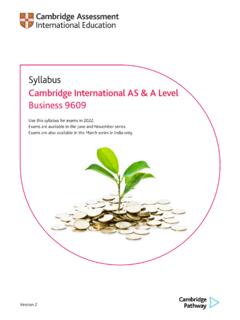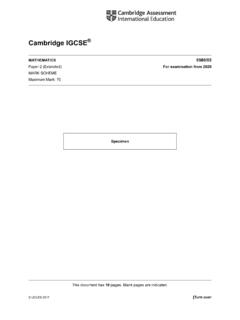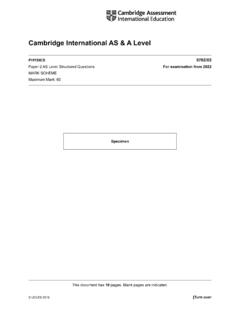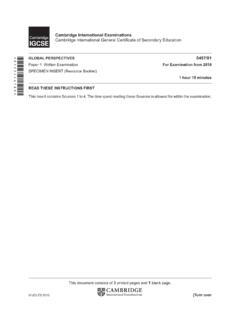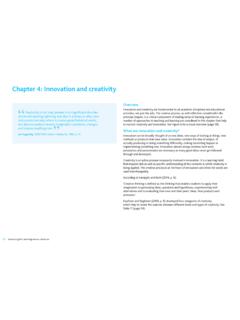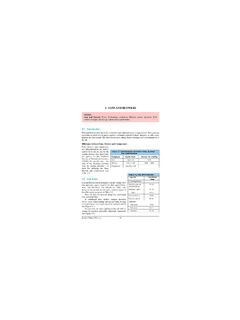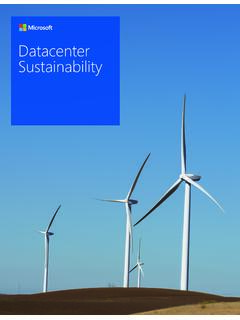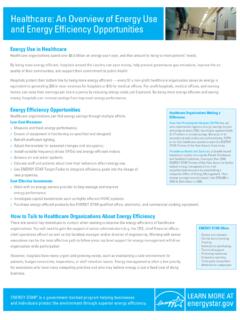Transcription of Digital technologies in the classroom
1 What other terms are associated with Digital technologies in the classroom ? Digital technologies in the classroomIn recent years reference to Digital technology in the classroom (DTC) can be taken to mean Digital processing systems that encourage active learning, knowledge construction, inquiry, and exploration on the part of the learners, and which allow for remote communication as well as data sharing to take place between teachers and/or learners in different physical classroom locations. This is an expanded notion of technologies that recognises their development from mere information delivery systems and also clarifies their role in classrooms in contrast to their wider use across schools and learning mDefinitionExampleBenefit(s)Risk(s)Bring your own device (BYOD)
2 Learners bring their own technology into the classroom for use as part of the learning activitymobile phone is used to browse the internet as part of a research activitygreater range of technologies available and lower cost to institutiondifficult to control and monitor usagesome learners may have better devices than otherslack of teacher understanding/ trainingE-portfolioslearners and teachers create an electronic catalogue of work that tracks their learning journey. This is usually online and often uses multimedia filesa student portfolio of artwork is presented online through an e-portfolio.
3 This includes scans of their sketches, photographs of displays and visits to galleries, written reflections, narrated videos of the artist (learner) at work and an audio logbookprovides a way of quickly and seamlessly presenting a wide variety of material in different formats including details of processdata security and confidentiality lack of teacher understanding/ trainingFlipped classroomlearners discover new content before the lesson from online videos or resources and then apply this knowledge in more personalised work in the classroomlearners watch a video at home about how sedimentary rocks are transformed into metamorphic rocks.
4 In class they work in groups to collaboratively create a diagram explaining this process of transformationmore time for activities that promote deeper understanding and reflectionlearners do not understand or are not able to access the flipped material flipped learning is not appropriatemisunderstandings arise that are not addressed in class lack of teacher understanding/ trainingensuring resources are up-to-date Interactive Whiteboards (IWB) allow images from a computer to be displayed through a Digital projector, onto a large (usually wall-mounted) board.
5 Users can interact with the content on the board using fingers or a stylus. Software Applications (Apps) are designed to operate on mobile devices such as smartphones and tablet computers. Web refers to the second generation of the World Wide Web. Web includes features and functionality that were not available before, for example. podcasts, blogs, wikis, RSS (Rich Site Summary used for updating regularly changing web content), social networking and are the benefits of Digital technologies in the classroom ?
6 The potential benefits of DTC are that it can foster dialogic and emancipatory practice. Dialogic practice is that in which students are active, engaged and empowered participants in a conversation from which learning emerges. For example, learners working on a maths modelling programme can start to have conversations about what they see on a computer screen without having to rely on terminology that they may not yet have (look at that , what happens if you do this ?) The teacher can then add the appropriate language into the conversation as the project technologies in the classroom continued Emancipatory practice is that in which an individual student s ideas go beyond the learning prescribed by the teacher/syllabus as they draw on knowledge gained outside formal education to construct understanding.
7 For example, in music lessons learners can use their own knowledge and expertise of playing instruments or using technology to construct their own recording environments (perhaps using their mobile phone). They can then bring in ideas that they have created at home or in instrumental music lessons. Different technologies can improve learning by augmenting and connecting learning activities. For example, in a geography lesson two classes in different schools may link up via the internet to explore cultural differences in relation to a particular global issue such as pollution or energy supply.
8 The groups could work together to understand not just the issue itself but its impact on communities and individuals by talking to real people. In situations where bandwidth is limited this could be done at a whole class level via video or even over email or SMS (Short Message Service) messaging. Digital technology can often also be exciting for learners and offers a potentially more engaging alternative. At the same time it is important to be aware that some learners may be less confident in learning with Digital technologies and steps need to be taken to ensure equality of access.
9 Digital technology offers immediate feedback for both the learner and the mDefinitionExampleBenefit(s)Risk(s)Perso nal Learning Network (PLN)a PLN is an individual s loose collection of links with other people or resources. The aim of such a network is to facilitate an exchange of ideas that supports learninglinks can be through, for example:online interest groups for example on Twitter and/oronline and face-to-face coursesaccess to a wide range of perspectives and expertise beyond the confines of the physical institutiondata security and confidentiality accuracy of informationaccess to the network lack of teacher understanding/ trainingVirtual Learning Environment (VLE)a VLE is an e-learning education system that is web-based, but modelled on conventional face-to-face education.
10 It provides access to courses, course content, assessments, homework, links to external resources etcMoodleBlackboardeasy way to collate and organise courses and informationflexibility of access software can limit course structure high level of maintenance SubstitutionInstead of producing a handwritten report, learner types the report using a word acts as adirect tool substitute, withno functional changeAugmentationTeacher adds comments electronicallythen emails the report back to acts as adirect tool substitute, withfunction improvementModificationLearner loads report onto a blog.

